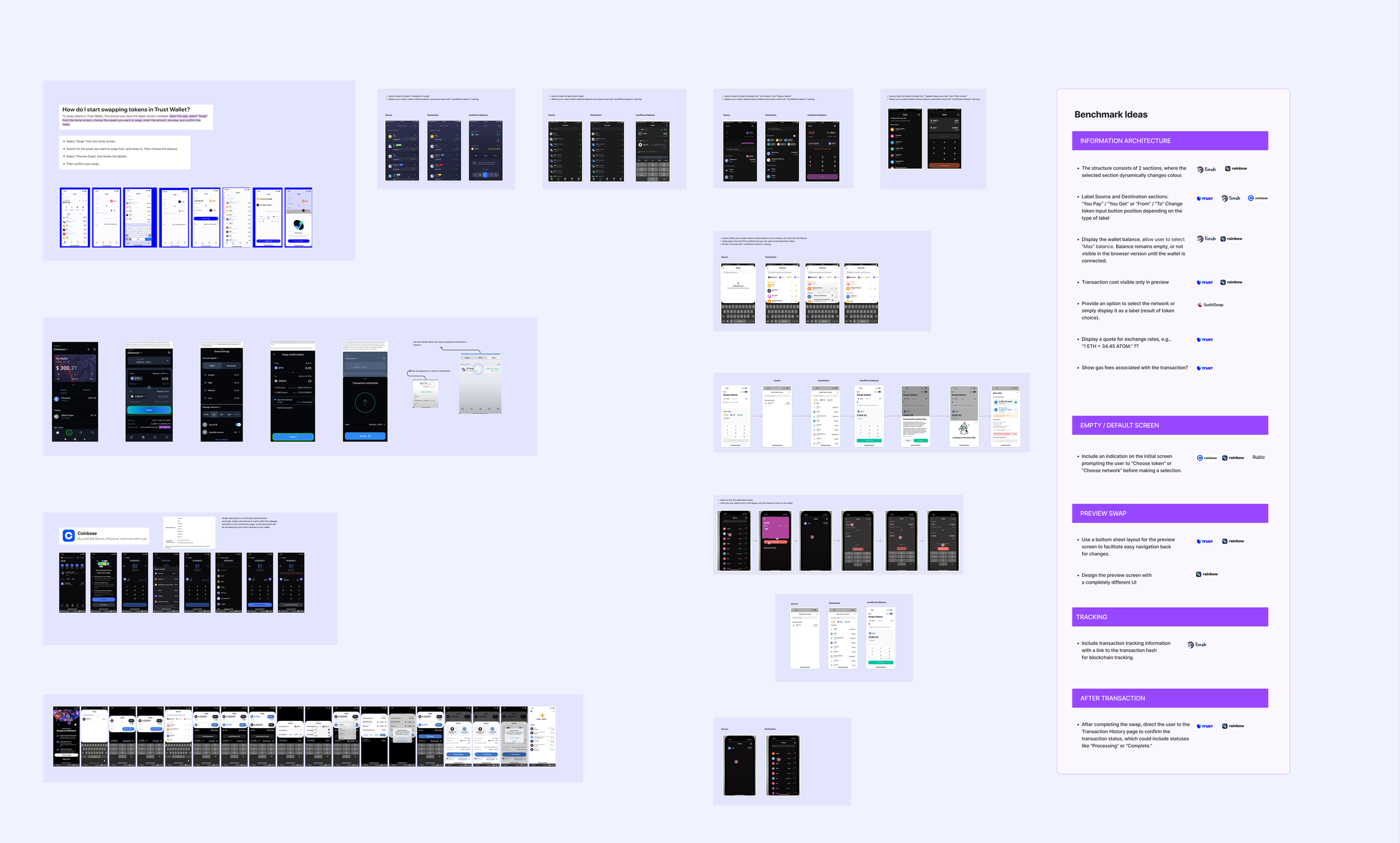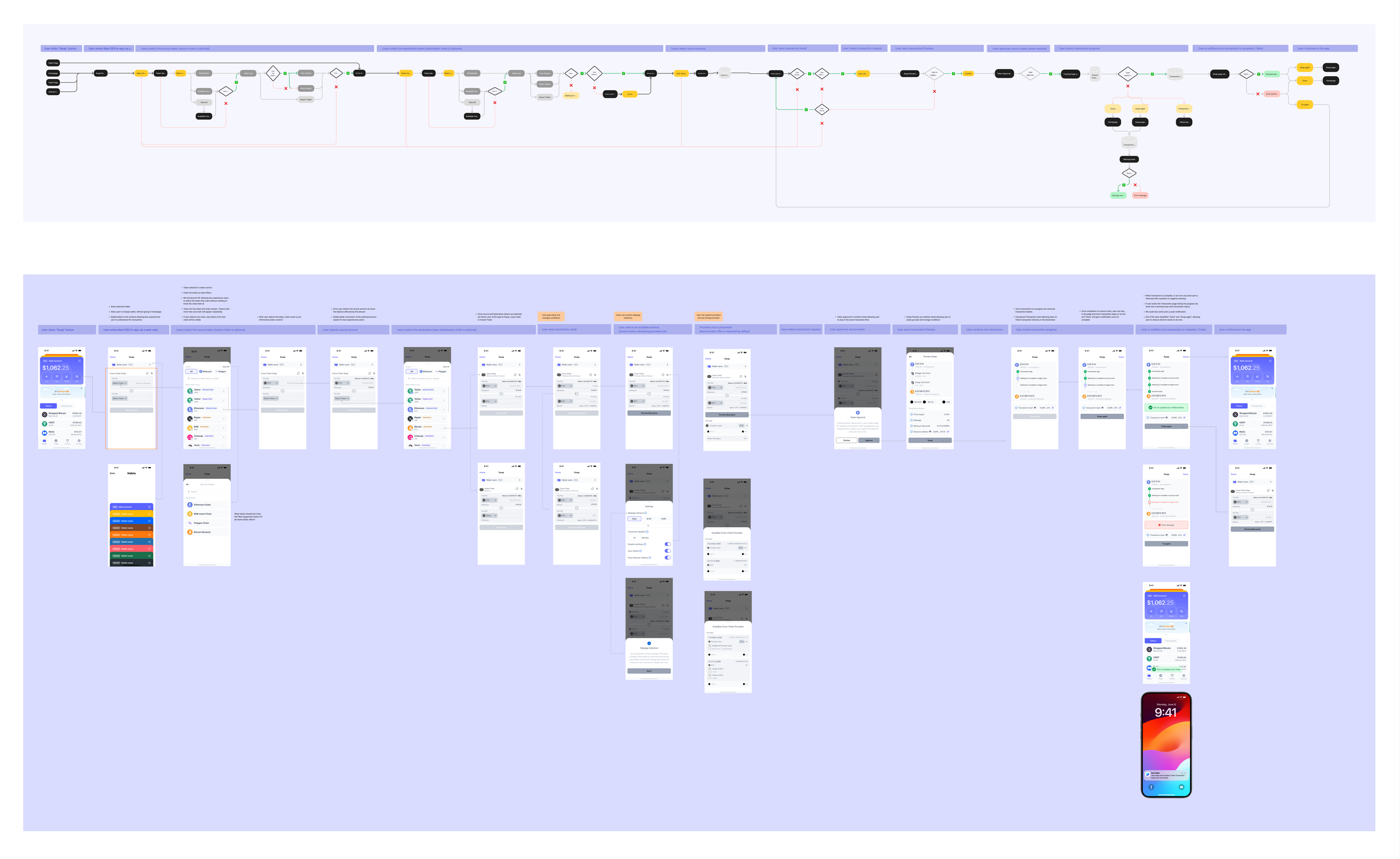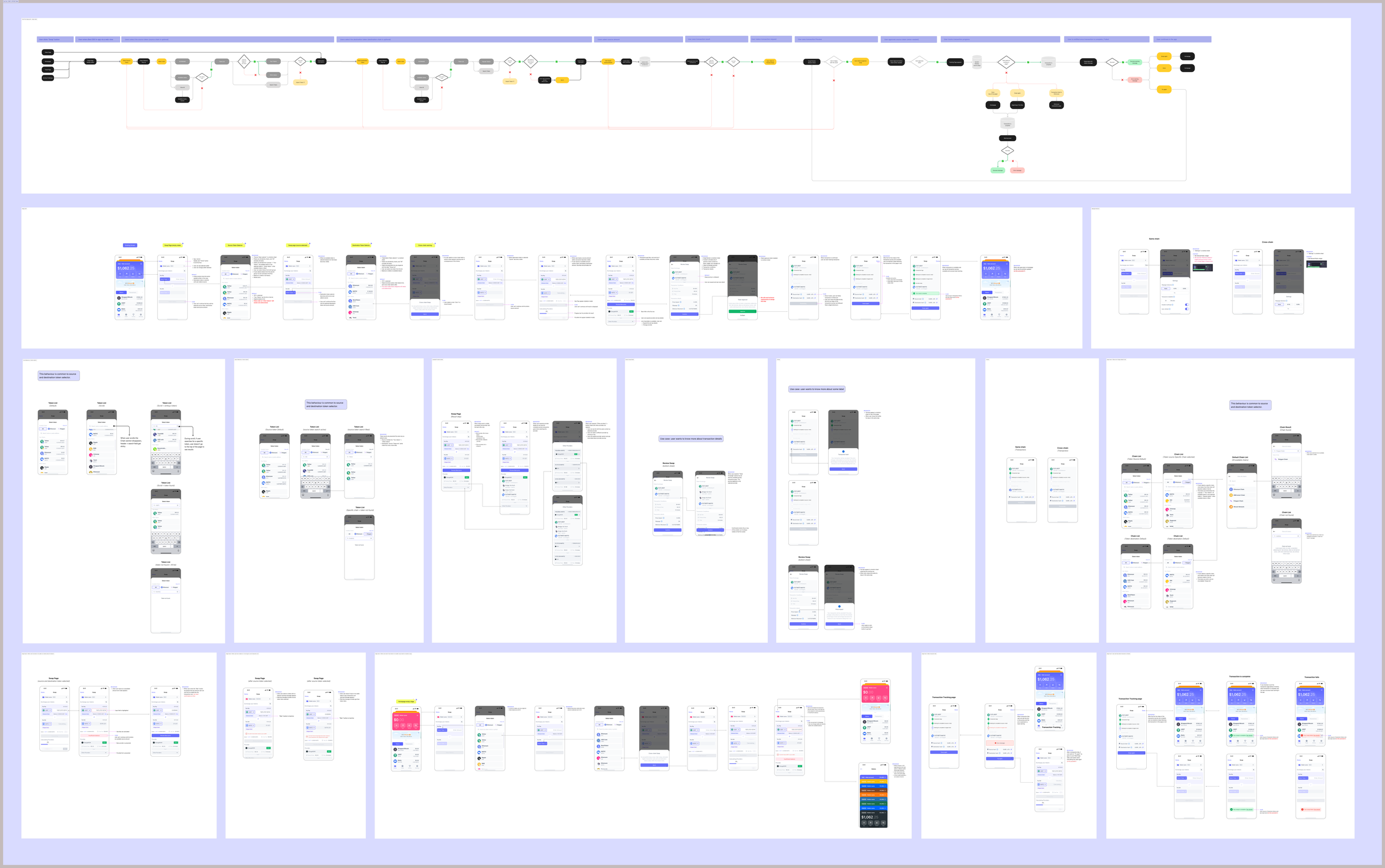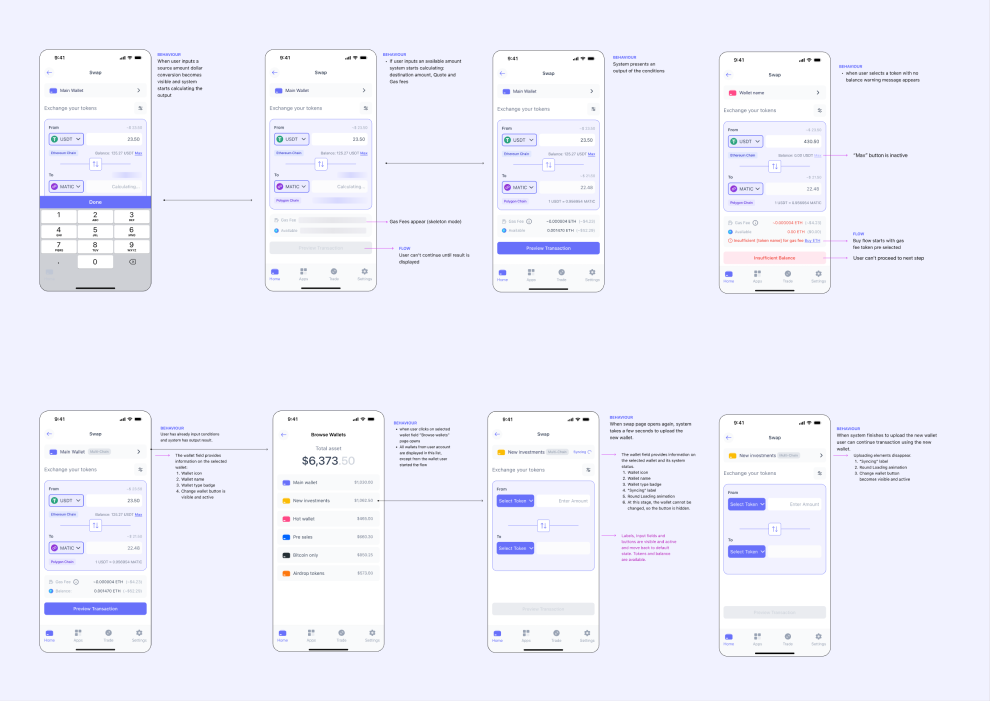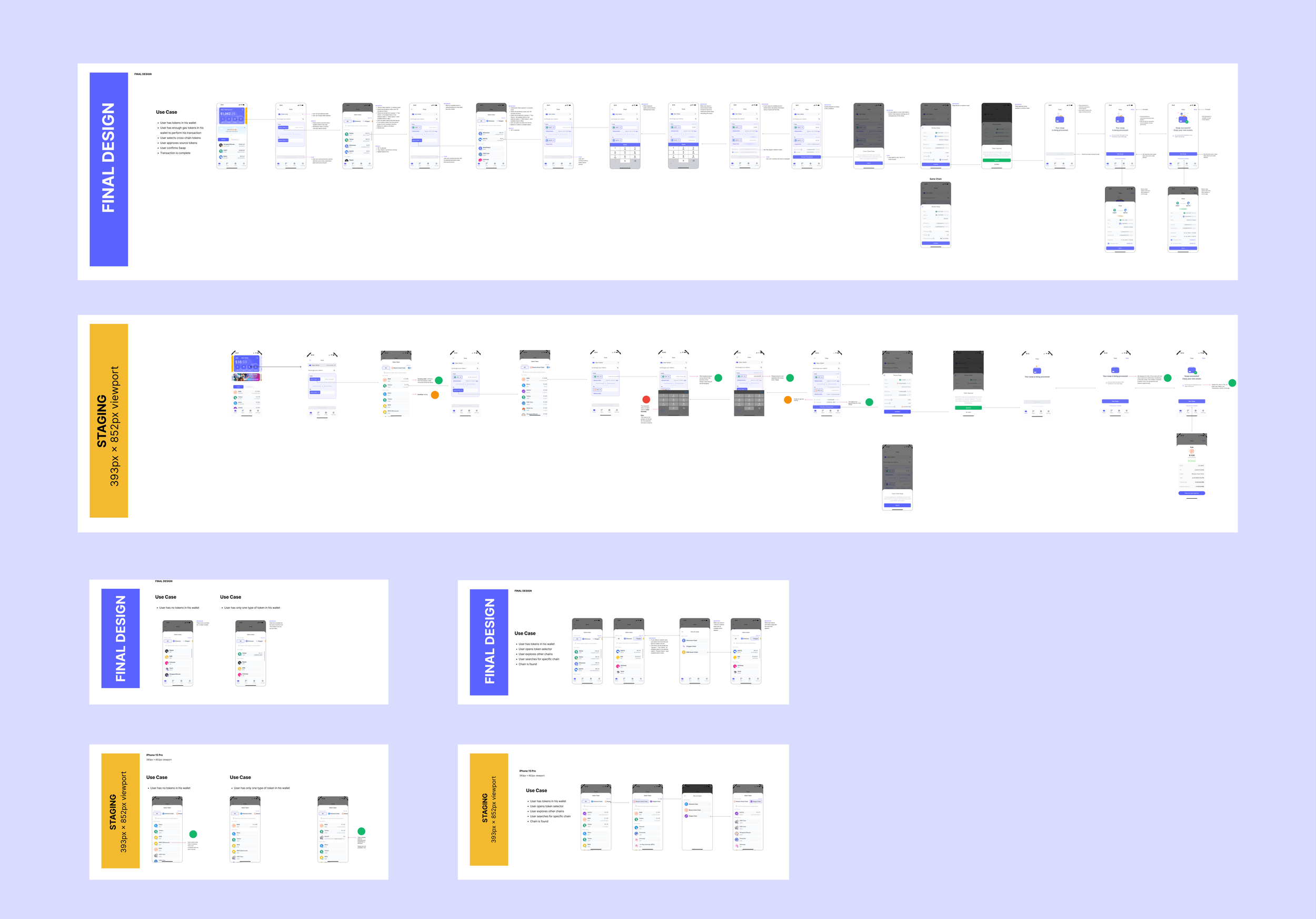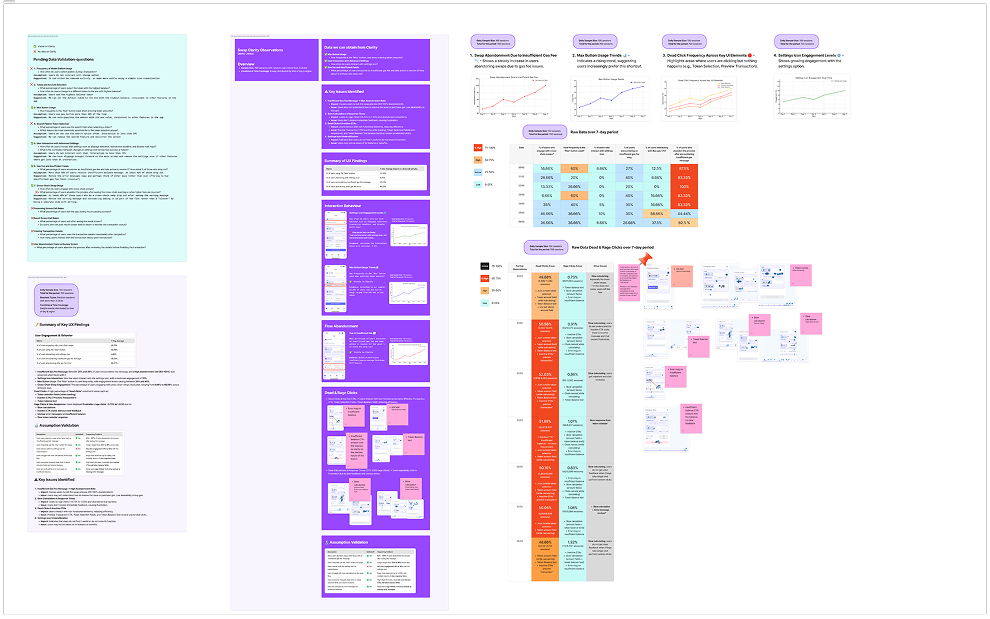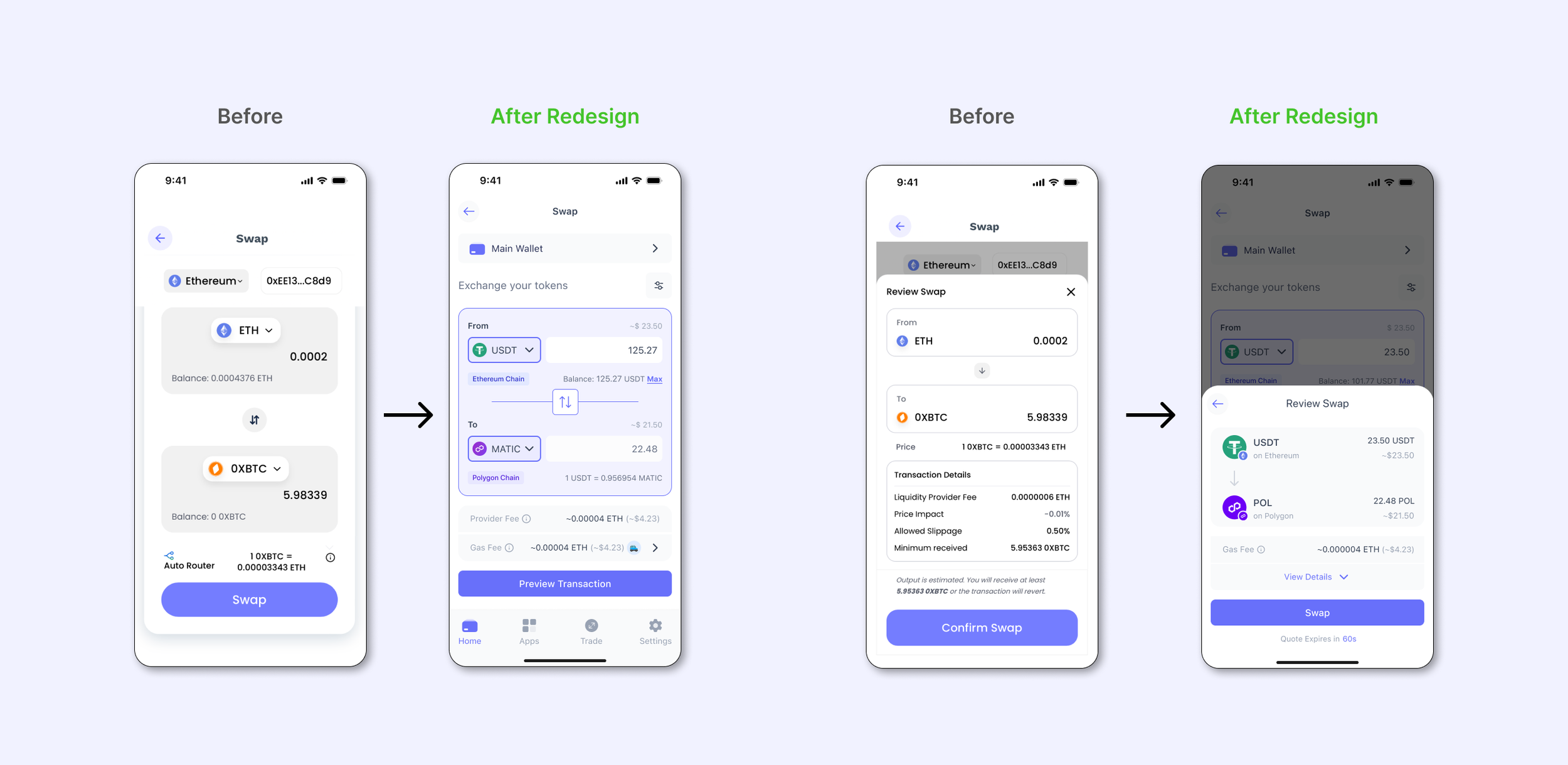Rethinking the
Cross-Chain Swap Experience
Redesigned a legacy swap feature to support seamless cross-chain transactions within a multi-asset crypto wallet. Focused on simplifying complexity, improving reliability, and building user trust — especially for non-expert crypto users transacting in high-stress moments.
My Role: Design Lead / UX Designer
Duration: 6 months Team: 5 designers
Other Teams: Product, DEVs, Business, Data, CRM
01. Impact
Improved clarity and trust in the swap process
Reduced user friction across key flows
Established a repeatable design–product collaboration framework later applied to other features.
02. Overview
Challenge
The existing swap feature only supported same-chain transactions and had an outdated design. The goal was to introduce cross-chain swaps through a third-party SDK while ensuring a frictionless, intuitive experience that concealed technical complexity from the user.
Objectives
Enable cross-chain swaps without leaving the app
Deliver a seamless flow between native and third-party experiences
Simplify choices and language for non-expert crypto users
Improve clarity, feedback, and reassurance during transaction tracking
Ensure scalability for future updates
03. Research & Competitive Analyses
Benchmark
We tested and analysed leading wallets and DeFi apps to evaluate:
Information architecture and flow structure
Empty states and
edge-case handling
Review and tracking screens
Notification patterns and success feedback
Findings guided the UX direction: we din’t want to overwhelmed users with technical options (provider selection, gas management, advanced settings).
Our approach prioritised clarity over control, with contextual help and minimal decisions.
Part of the benchmark and ideas that guided next steps
04. Defining the User Journey
Based on the product’s technical brief, we created frontstage/backstage journey maps showing every step between the user interface and background blockchain processes.
Technical journey map, highlighting front and backstage steps
This helped us:
Identify dependencies, blockers,
and potential wait timesDefine when and how to surface progress and error feedback
Simplify the visible flow while maintaining backend awareness
05. UX Design & Feature Definition
We collaborated closely with product and business stakeholders to prioritise features.
After mapping third party flows, we simplified the architecture, made task flows, reduced screens, and rewrote copy for accessibility.
The goal: make complex blockchain actions feel simple, predictable, and safe.
Initial flows based on third party solutions
Wireframe iterations covering some key stages of the experience.
06. Testing & Validation
We performed several User interviews to validate early design assumptions:
Users appreciated simplicity and automation
Users wanted visible progress tracking (“reassurance moments”)
Tooltips and settings were under-discovered
Some steps (review & progress) still felt overwhelming
After analysing all the interviews, we iterated to make progress feedback more visible, simplified the review step, and refined copy for clarity.
07. Delivery & Handoff
Once the design was approved, we finalized all components and delivered production-ready design files along with thorough documentation to support implementation. This included:
A handoff file detailing happy paths, edge cases, and failure states.
Interaction notes for each screen, covering default states and available actions.
Examples of handoff documentation
08. Design QA
Before release, we ran a full Design QA (Quality Assessment) to ensure implementation accuracy. Each issue was categorised by impact:
High
Blocks user flow
Medium
UX deviation, recoverable
Low
Visual inconsistency
This systematic QA reinforced the product’s design quality and ensured parity between the final build and the intended user experience.
Example of design QA feedback, comparing the final design files with the staging implementation.
09. Post-Launch Behavioural Insights
After launch, we combined customer feedback, behavioural analytics, and session replay data to evaluate real-world usage. This research helped identify key friction points and usability gaps, guiding a series of UX refinements focused on clarity, performance, and overall flow efficiency.
Session replay analysis, observation notes and a presentation of insights to the team.
10. Conclusions
This project demonstrated how design bridges user needs, technical feasibility, and business goals. By combining real user feedback with close cross-team collaboration, we created a solution that simplified complex blockchain interactions and aligned stakeholders around a shared, user-centered vision. It also established a repeatable framework for validation and post-launch analysis — reinforcing how strategic design drives innovation, usability, and long-term value.
Simple design is not about fewer features, it’s about fewer doubts.
Next steps
The next step involved user interviews to uncover the “why” behind user behavior — insights that would inform a more intuitive, data-driven redesign of the swap experience.
